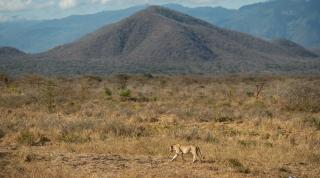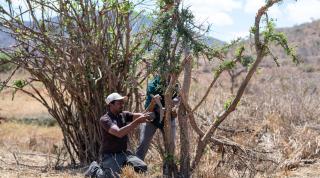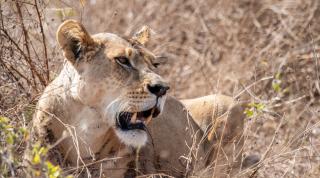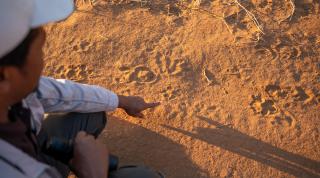
Project overview
Project overview
In Africa, lions are of national importance, but they are under threat with populations having halved in the last 30 years. In Tanzania’s iconic Mkomazi landscape, WWF has supported the first ever lion census, counting these vulnerable big cats by using their unique whisker spot patterns and other distinguishable features, allowing lion expert teams to identify individual animals.
This Mkomazi census marks an historic moment for lion conservation: not only will the results produce the first set of robust lion numbers for this landscape. But when combined with results from the neighbouring Tsavo census in Kenya, we will get to know the lion population across these two transboundary landscapes in Kenya and Tanzania. This will give us critical insights into conservation efforts for these majestic creatures across the SOKNOT landscape (Southern Kenya, Northern Tanzania).
This pioneering work is the result of many partners and institutions, and has been generously supported by funds raised by players of People’s Postcode Lottery.
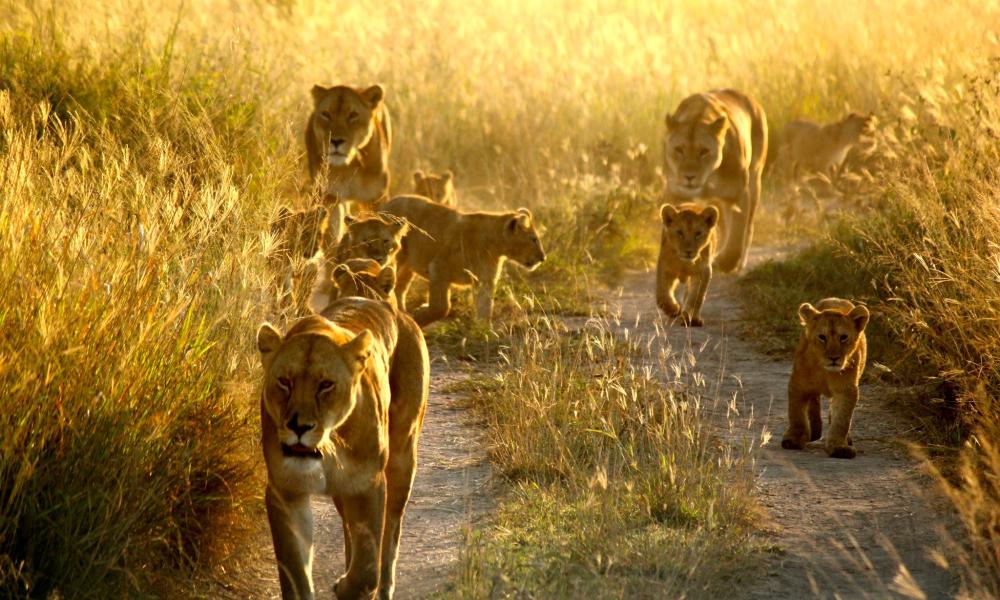
How does it work?
How does it work?
To count Mkomazi’s illusive big cats, WWF lion experts are using a rigorous method called SECR, developed by carnivore experts. SECR (Spatially Explicit Capture Recapture) involves photographing the whisker-spot patterns on individual lions – which, like human fingerprints, are unique to each individual. Watch WWF-Tanzania’s lion expert, Emanuel, explain how this works, and why he hopes the future of lions is bright.

Why we are doing it?
Why we are doing it?
Lions are now extinct in 26 countries, with only 23,000 left in the wild. Tanzania is believed to hold a large portion of the remaining wild lion range and numbers. But the problem is, we don’t accurately know the size and trends of lion populations across most of Tanzania. This is a similar challenge faced across almost all of the remaining lion range in Africa. This is a major knowledge gap. Understanding lion populations is crucial to informing and adapting conservation measures and monitoring progress over time.
As apex predators in the African Savannah – meaning they sit at the very top of their food chain – lions play a pivotal role in sustaining healthy, balanced ecosystems. But their populations are declining rapidly due to habitat loss and fragmentation driven by agricultural expansion and infrastructure development, human-carnivore conflict, declining natural prey abundance, climate change, and illegal wildlife trade.
Without lions, populations of herbivores, including zebra and wildebeest, could increase unchecked, leading to overgrazing and habitat degradation, and increased competition with livestock grazing.

Project impact
Project impact
This work aims to reduce conflict between people and wildlife. Prof. Noah Sitati, explains:
"Our focus is on reducing conflict to ensure coexistence, between people and wildlife. One of the things we’ve done is build predator-proof bomas. They are almost 98% effective – we’ve seen no more losses of livestock, and that has really changed the attitude of local people.
With the support that we have gotten for lions, from our key supporters – WWF-UK and others – we are seeing communities becoming more positive. Cases of human-wildlife conflict have really gone down, because they are seeing the value."

Next steps
Next steps
WWF-Tanzania's Lion expert, Emanuel hopes that the data from this census will be used to inform and enhance current conservation measures, and will help local communities and lions to coexist.

